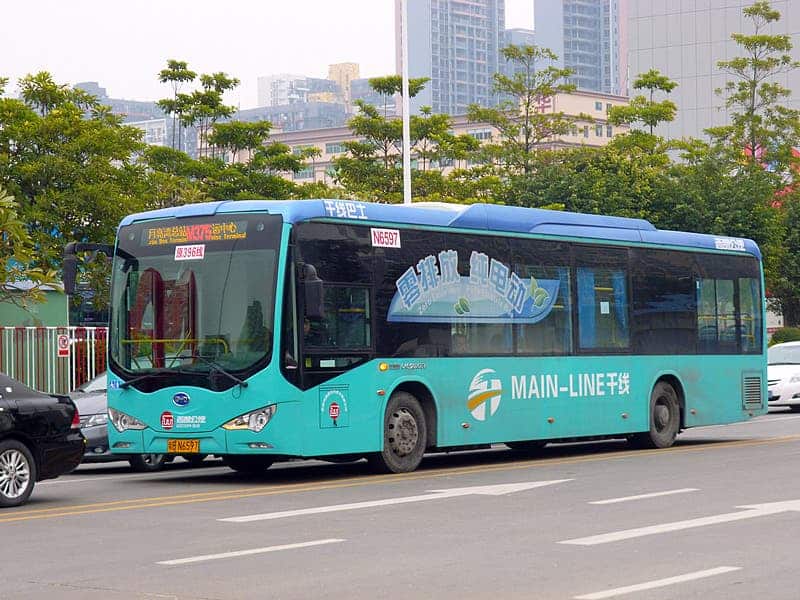China just announced the deployment of the world’s largest electric buses – in the city of Shenzen. The number of electric buses on China’s roads went over 100,000 in 2015 – over 20% of the country’s share of buses. If this trend continues, all the country’s buses will be electric in 10 years.
The BYD electric bus or BYD ebus, called K9 in China, is an all-electric bus model manufactured by Chinese automaker BYD, powered with its self-developed Iron-phosphate battery. According to BYD, it has the longest drive range of 250 km (155 miles) on one single charge under urban road conditions.
The first BYD ebus was deployed on September 30, 2010 – which makes it even more impressive that Chinese buses are 20% electric. In both 2011 and 2012, BYD has obtained electric bus orders from other countries in the world, rolling out in Chicago in September 2011 and several cities in South America in 2012. In Europe, they were the first fully electric buses in London, and they can also be found in Spain, the Netherlands, Poland, Finland, Serbia and Denmark.
Recently, China unveiled a new series of buses, that charges in just 10 seconds and can run 5 km on one charge – you basically have a 10 second recharge every few stops, or have them run short routes. In addition to its rapid charging ability, the bus is also capable of more efficient usage of its energy during its travel, regaining some of the energy it uses on braking.
All in all, backed by heavy investments and generous subsidies, China’s electric buses are taking over not only the country, but also the world; and we couldn’t be happier about it.







